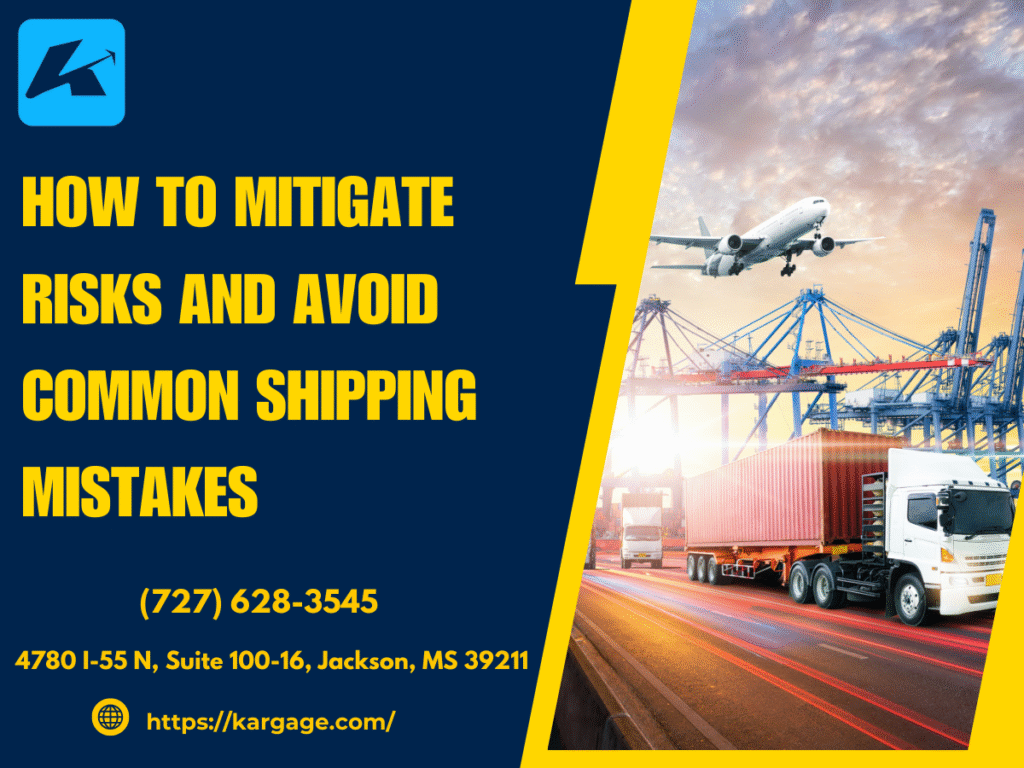Shipping freight is a high-stakes game where one misstep can lead to delays, damaged goods, or unexpected costs. Whether you’re moving pallets across state lines or containers overseas, risks lurk at every turn—from poor packaging to miscommunication. For shippers, avoiding common mistakes is key to keeping cargo safe and budgets intact.

How do you steer clear of these pitfalls?
This guide shares five practical strategies to mitigate risks and sidestep shipping errors, ensuring your goods arrive on time and in top shape.
1. Plan Thoroughly to Prevent Oversights
Rushed planning is a recipe for trouble. Without a clear strategy, you might book the wrong carrier, misjudge transit times, or overlook regulatory requirements.
Start by mapping your shipment’s details: cargo type, weight, dimensions, and delivery deadlines. Identify risks like weather, port congestion, or customs delays. Create a timeline that accounts for pickup, transit, and delivery, with a buffer for surprises.
Thorough planning catches issues before they snowball into costly mistakes.
Pro Tip: Use a checklist for every shipment, covering cargo specs, carrier needs, and compliance rules to stay organized.
2. Package and Label with Precision
Poor packaging or sloppy labeling is behind many shipping disasters. Weak boxes crush under weight, while vague labels lead to misrouted cargo.
Choose sturdy materials—reinforced crates for heavy items, insulated containers for perishables. Secure pallets with shrink-wrap to prevent shifting. For fragile goods, add cushioning like foam or bubble wrap. Label clearly with shipper/receiver details, handling instructions (e.g., “Fragile” or “Keep Upright”), and barcodes for tracking.
Kargage, a Jackson, Mississippi-based broker, stresses accurate labeling to ensure smooth handling by their carrier network.
Action Step: Test your packaging for durability. Double-check labels and include them on multiple sides to avoid confusion.
3. Verify Carrier and Service Compatibility
Picking the wrong carrier or service can derail your shipment. A standard LTL carrier might mishandle temperature-sensitive freight, or a budget provider could lack tracking capabilities.
Match your cargo to the carrier’s strengths. For example, refrigerated goods need reefer trailers with temperature controls, while oversized loads require flatbeds. Confirm the carrier’s insurance, safety ratings, and experience with your freight type.
Partnering with a broker like Kargage can simplify this, connecting you to over 31,000 vetted carriers for the right fit.
Quick Tip: Ask carriers for references or proof of experience with similar shipments. Check their FMCSA safety scores for reliability.
4. Stay Compliant with Regulations
Non-compliance can stop your shipment cold. Customs errors, missing permits, or ignored safety rules—like hazmat protocols—trigger fines, seizures, or delays.
Research regulations for your cargo and route. For international shipments, ensure accurate Harmonized System (HS) codes and customs paperwork. For domestic freight, follow DOT or FMCSA rules, like weight limits or driver hours-of-service.
Work with carriers or brokers who know the rules. A customs broker can also streamline international compliance.
Best Practice: Create a compliance checklist for each shipment. Consult a broker or expert for complex requirements to avoid oversights.
5. Use Technology for Visibility and Control
Lack of visibility invites mistakes—lost cargo, missed deadlines, or unaddressed issues. Modern technology, like Transportation Management Systems (TMS) or real-time tracking, keeps you in the loop.
A TMS optimizes routes, tracks costs, and flags delays. GPS or IoT sensors monitor cargo conditions, like temperature for perishables. Digital platforms streamline communication with carriers and receivers.
Kargage leverages tech to give shippers real-time updates, helping them catch and fix issues before they escalate.

How to Start: Adopt a TMS or tracking tool. Ensure your carrier provides digital updates to monitor your shipment’s progress.
Putting It All Together
Shipping doesn’t have to be a gamble. By planning thoroughly, packaging smartly, choosing compatible carriers, staying compliant, and using technology, you can mitigate risks and dodge common mistakes.
These strategies aren’t just about avoiding problems—they’re about building a reliable, cost-effective shipping process. At Kargage, we’ve seen how proactive shippers keep freight moving smoothly, no matter the challenge. But this isn’t about us—it’s about you.
Ready to ship with confidence? Call us at (727) 628-3545 for a quote. With these tips, you’re set to navigate shipping risks like a pro.

